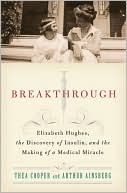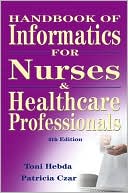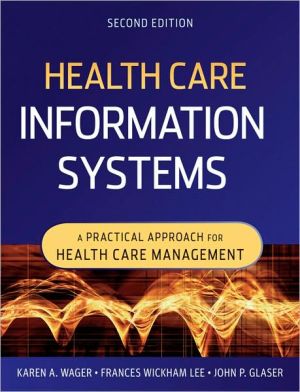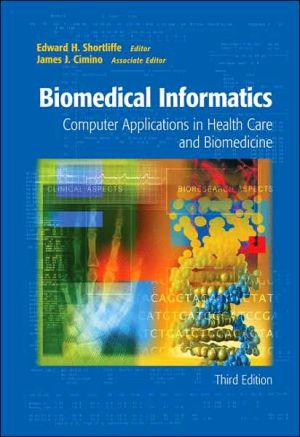Essentials of Stem Cell Biology
Search in google:
First developed as an accessible abridgement of the successful Handbook of Stem Cells, this book serves the needs of the evolving population of scientists, researchers, practitioners and students that are embracing the latest advances in adult and embryonic stem cell research. Since the last edition was published, stem cell research has evolved into an important research tool, and stem cells have come to represent potential salvation for many people suffering from incurable diseases. Dr. Lanza is a prominent figure not only in the world of life sciences but is recognized publicly through the broad media coverage of his research. Doody Review Services Reviewer:Bruce A. Fenderson, PhD(Thomas Jefferson University)Description:Development proceeds from clusters of self-renewing stem cells to beautiful arrays of complex tissues. As the mechanisms for differentiation are gradually revealed, stem cell-based therapies may transform medicine, providing replacement cells for patients with chronic diseases. This beautiful book provides a complete introduction to the theory and practice of stem cell research. Its 69 definitive chapters cover topics ranging from molecular bases of pluripotency and induced pluripotent stem cell derivation to spinal cord injury.Purpose:According to the editors, the aim of this book is to provide "prerequisites for a general understanding of adult and embryonic stem cells; the ... experimental protocols needed to study and characterize stem cells...; as well as a presentation by the world's experts of what is currently known about each specific organ system." The editors and authors hope the book "will contribute to new therapies of cancer, heart disease, diabetes, and a wide variety of other diseases that presently afflict humanity." The book brings together the most productive authors and researchers in this exciting field.Audience:The book is written for a broad audience of basic science and clinical researchers interested in developmental biology. It will appeal to those interested in adult stem cells as well as those interested in embryonic stem cells. Biomedical researchers interested in bioengineering, gene therapy, and oncology will also value this book for its insights into mechanisms of growth and differentiation.Features:This full-color book is divided into six major sections covering basic stem cell biology, general methods, organ system-based applications, and regulations and ethics. The authors interpret and explain the literature. They document historical developments and provide examples of key laboratory findings. Prior knowledge of stem cell biology is not assumed. The preface includes thoughtful essays that help the novice gain an overview of the field. The methods section does not attempt to provide detailed protocols, but rather focuses on concepts and strategies. Each chapter provides an introduction, colorful headers, key words with definitions, and a short list of references for further reading. The full-color figures and illustrations are outstanding. A glossary of key words is included.Assessment:This is the best book I've reviewed on stem cell biology. This updated second edition incorporates the latest advances in the field and features new chapters on direct reprogramming, cancer stem cells, and translational medicine. I particularly enjoyed learning about methods for deriving a wide variety of differentiated cells from mouse and human embryonic stem cells. This is the one book to have for anyone interested in the promise of stem cell research. It will provide an excellent resource for years to come.
FOREWORD Why Stem Cell Research?A New Path ?{ Induced Pluripotent Stem Cells Embryonic Stem Cells Versus Adult Stem Cells'Stemness': Definitions, Criteria and Standards PART ONE INTRODUCTION TO STEM CELLS 1. Present Perspective and Future Challenges 2. Embryonic Stem Cells in Perspective 3. The Development of Epithelial Stem Cell Concepts 4. The Advent of Direct Reprogramming 5. Clinical Translation of Stem CellsPART TWO BASIC BIOLOGY/MECHANISMS6. Molecular Basis of Pluripotency 7. Stem Cell Niches8. Mechanisms of Stem Cell Self-Renewal 9. Cell Cycle Regulators in Stem Cells 10. Epigenetic Mechanisms of Cellular Memory11. Cell Fusion and the Differentiated State12. How Cells Change Their PhenotypePART THREE TISSUE AND ORGAN DEVELOPMENT13. Differentiation in Early Development 14. Primordial Germ Cells in Mouse and Human 15. Stem Cells in Extraembryonic Lineages 16. Amniotic Fluid Derived Pluripotent Cells 17. Cord Blood Stem Cells18. Neurogenesis in the Vertebrate Embryo 19. The Nervous System20. Neuronal Progenitors in the Adult Brain 21. Sensory Epithelium of the Eye and Ear 22. Epithelial Skin Stem Cells 23. The Ontogeny of the Hematopoietic System 24. Hematopoietic Stem Cells 25. Red Blood Cells 26. Cell Differentiation in the Skeleton 27. Vascular Progenitor Cells 28. Multipotent Adult Progenitor Cells 29. Mesenchymal Stem Cells 30. Skeletal Muscle Stem Cells 31. Stem Cells and the Regenerating Heart 32. Potential of ES Cell Differentiation Culture for Vascular Biology 33. Cell Lineages and Stem Cells in the Kidney 34. Adult Liver Stem Cells 35. Pancreatic Stem Cells 36. Stem Cells in the Gastrointestinal Tract 37. Stem Cells in the Lung PART FOUR METHODS38. Generation of Induced Pluripotent Stem Cells 39. Characteristics and Characterization of Pluripotent Stem Cells 40. Isolation and Maintenance of Murine Embryonic Stem Cells 41. Isolation, Characterization, and Maintenance of Primate ES Cells 42. Approaches for Derivation and Maintenance of Human ES cells: Detailed Procedures and Alternatives43. Derivation and Differentiation of Human EG Cells 44. Growth Factors & the Serum-Free Culture of Human Pluripotent Stem Cells 45. Feeder-Free Culture46. Genetic Manipulation of Human Embryonic Stem Cells 47. Homologous Recombination in Human Embryonic Stem Cells 48. Surface Antigen Markers 49. Lineage Marking 50. Genomic Reprogramming 51. Isolation and Characterization of Hematopoietic Stem Cells 52. Microarray Analysis of Stem Cells and Differentiation 53. Zebrafish and Stem Cell Research PART FIVE APPLICATIONS54. Cancer Stem Cells55. Neural Stem Cells: Therapeutic Applications in Neurodegenerative Diseases56. Spinal Cord Injury 57. Use of Embryonic Stem Cells to Treat Heart Disease 58. Insulin-Producing Cells Derived from Stem Cells: A Potential Treatment for Diabetes59. Burns and Skin Ulcers 978-0-12-370465-860. Stem Cells and Heart Disease 61. Stem Cells for the Treatment of Muscular Dystropy 62. Skin Regeneration 63. Orthopaedic Applications of Stem Cells 64. Embryonic Stem Cells in Tissue Engineering 65. Adult Stem Cells in Tissue Engineering 66. Stem Cell Gene Therapy PART SIX REGULATION AND ETHICS67. Ethical Considerations 68. Religious Considerations 69. Regulatory Considerations 70. It¡¦s Not About Curiosity, It¡¦s About Cures Epilogue: Concluding Statement








